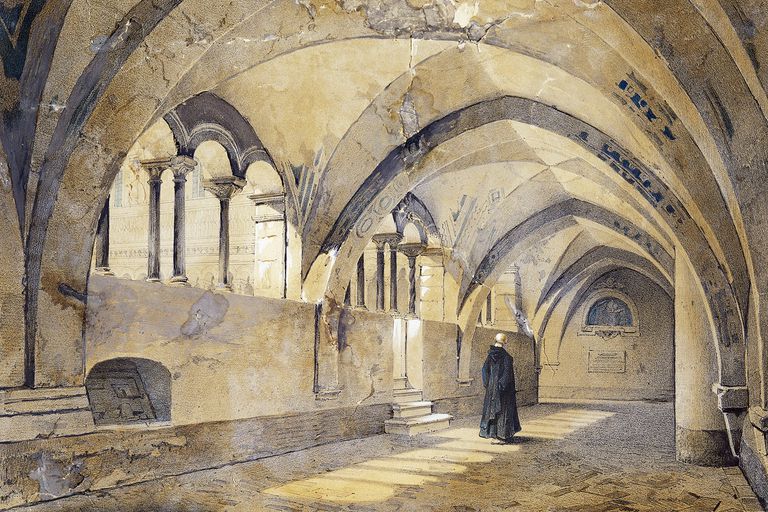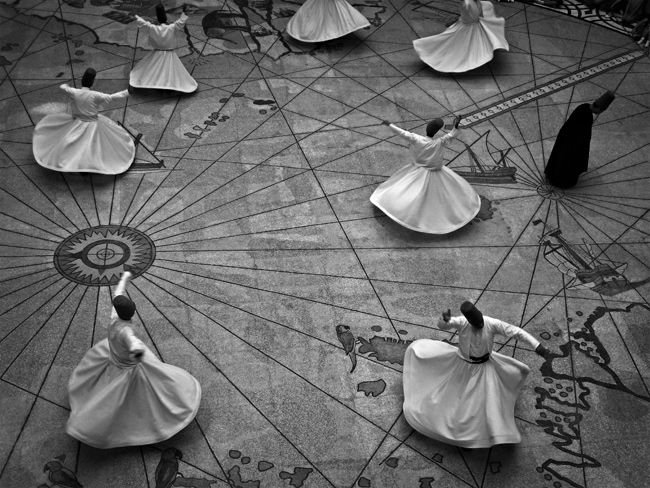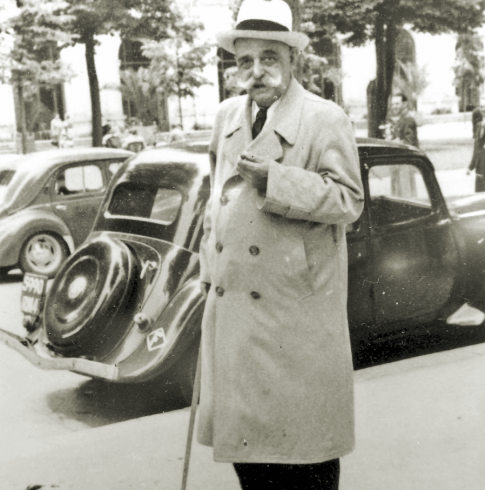
I first heard of this book when I was a teenager. It was probably a review of the 1979 film adaptation by Peter Brook. I later worked for an ad agency and suggested a furniture campaign called “meetings with remarkable chairs.” Needless to say, no one in the room got the reference. Today, the book comes back into my life by a strange coincidence just as I’m working to set up a centre for well being–the very thing George Gurdjieff (1866-1949) is most noted for.
In Meetings with Remarkable Men, Gurdjieff tells the story of his childhood and young adulthood as he travels from his native Armenia, through Turkey, Russia and Asia in search of spiritual awakening. In part, the account reads like an adventure story with disguises, scenes of hypnotism, near death experiences, strange encounters with a Russian prince and a girl rescued from enslavement, stories of revolution and refugees, and travels with friends into unknown regions–there’s even a chapter devoted to a dog. As a spiritual odyssey, it often feels like the leader of the voyage is as much rogue as he is saint. This may be the point. What Gurdjieff values from his upbringing is how he learned to be self-reliant and adaptable. As a result, he is able to find work almost anywhere, but only works long enough to earn passage for his next adventure.

In his travels, Gurdjieff meets a variety of people. At first it seems any one who crosses his path could be a remarkable person. There’s something appealing about this idea. All our encounters change and shape us, help define what we want and don’t want, and contribute to making us who we are. At times, Gurdjieff’s friends start out as enemies, as people he doesn’t understand or has little sympathy for. Circumstances cause him to change his orientation. He’s humbled and awakened.
Awakening is one of Gurdjieff’s central metaphors. He asks why are we sleeping? Why do people sleepwalk through life, instead of consciously directing themselves toward the expression of their better selves? He defines a “remarkable person” as someone who “stands out from those around him by the resourcefulness of his mind, and who knows how to be restrained in the manifestations which proceed from his nature, at the same time conducting himself justly and tolerantly towards the weaknesses of others.” (p. 31)
In his early travels, Gurdjieff searches for a teacher or for a trove of lost wisdom that he senses is waiting to be discovered. His background, Greek, Armenian and Russian, is multi-ethnic, multi-lingual and leads to his fascination with reconciling ideas of East and West. He invents a teaching method called the “Fourth Way,” that builds on three earlier paths to knowledge: methods of the monk (requiring asceticism and devotion), fakir (requiring endurance and pain), and yogi (requiring dedicated study). The Gurdjieff way, called “the Work,” seeks not to remove the student from the world, or reject the imperfections of the world, as monks do, but rather to live in the world and make the most of it. The Work uses didactic stories, physical labour, lectures, shared experiences, self-observation, and travel. But most important in the path to enlightenment is music and dance.

Gurdjieff was influenced by sufi dancing, folk dancing, martial art exercises like Tai Chi, and experimental Western theatre. He combines these elements in a new dance form, created by a team of artists who he attracted for this purpose. An important member of this team is Russian composer Thomas de Hartmann, who collaborates with Gurdjieff on hundreds of compositions and dances. In Brook’s film, we are given a sampling of these mesmerizing exercises.
Here is a typical story. Gurdjieff spends months preparing for a journey. He proceeds with great care, then on a chance encounter, abruptly changes course toward a new goal whose outcome is more extreme. The second adventure lands him in remote spots far from Western values and it’s here that Gurdjieff witnesses an act of charity, a method of teaching or a performance that opens his eyes to new ways of being.
Gurdjieff returns with these insights, which he reformulates in his own roguish fashion. True to his nature, he is a charismatic showman drawn to crafts of any kind, stories, art, music and dance. His goal is to set up a school, ostensibly to study concerns of mind/ body, a meeting ground of medicine, exercise, performance and psychology. An early teacher had told him that a priest should be a doctor and a doctor must have some understanding of the inner troubles of his patients. Gurdjieff sees himself as both patient and priest, engaging in difficult journeys to further “the formation of his individuality.” An important lesson he learns is that words alone cannot lead to wisdom or to belief. “Grafting faith on by words is just like wishing to fill someone with bread merely by looking at him.” (p. 240) A student must be active and avid in his quest. As Gurdjieff says, “Understanding is acquired from the totality of information intentionally learned and from personal experiences; whereas knowledge is only the automatic remembrance of words in a certain sequence.” (241)
Gurdjieff has a great gift for making and losing money. One of the most fascinating chapters in this book describes how he sets himself an experiment to become exceedingly wealthy in a short period of time, starting from nothing. He does this by advertising in remote towns that he can repair any object or machine that is broken. The towns have jumped from primitive conditions to modern times in a matter of years and the newly rich have spent their money on every conceivable novelty. What Gurdjieff finds is that most machines are not broken at all; rather people have not been taught how to properly use and look after these machines. Yet the people who bring their sewing machines and type writers and watches to be repaired are often arrogant and over-bearing. Gurdjieff takes advantage of their greed and declares the machines will be very difficult to fix. It may take some time, but if the clients are willing to pay extra … In short, Gurdjieff uses his knowledge of human nature to deal with each customer and his knowledge of tools to acquire a handy profit.
This profit soon adds up to a small fortune, which Gurdjieff carries with him into Tsarist Russia. He invests in property, but he soon gets trapped by war and revolution and loses everything. Once again, he has to regroup and use his wits to survive. But as he flees and helps others escape, he finds he is increasingly responsible for a growing group of followers, students, artists and refugees from the Russian Revolution. He makes his way to the West and starts again, forming a school and dance company to showcase the blending of various traditions witnessed in his travels.

It’s a remarkable story. One wonders how much of it is true. In the end, it may not matter. Each adventure leads Gurdjieff off course, away from the initial goal, yet seems to reveal a more worthwhile area of investigation. Even chapters that are about one special person twist off course and are really the story of someone else. Gurdjieff, in turn, is flexible, resourceful and always in motion.
My final takeaway is this: Gurdjieff’s work reminds me of art collectives like the Ballet ruse that combine diverse art forms (painting, music, dance, and theatre) in a modernist avant garde context. Gurdjieff turns away from modernism, looking to older traditions for inspiration, but, in the end, his urge to combine art (dance theatre) with religion, psychology and mind-body health feels quite contemporary. My own quest involves art, health and nature. To my mind, nature is the missing link in Gurdjieff’s quest, though his chronicle of outstanding and outlandish personalities is entertaining and relatable. Much to ponder, much to learn.